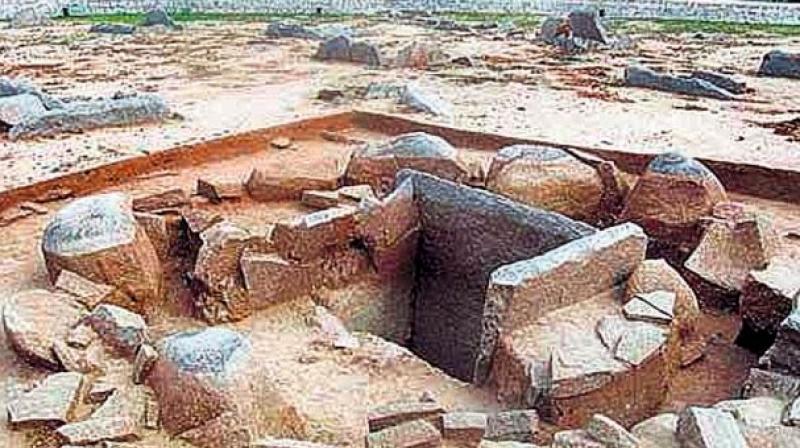Rajahmundry: Archaeologists studying megalithic burial site

Rajahmundry: State archaeological authorities will carry out excavations at four Polavaram project-hit villages including Jonnalagudem, Chinamettapalli, Rudramakota and Rayanipeta of Godavari districts from November 13 for 75 working days to take up a scientific analysis of megalithic burials. The state government has given administrative sanction for the excavation work and scientific analysis of megalithic burials at a cost of about Rs 50 lakh. The water resources department will release funds as the work progresses. The archaeological authorities have roped in experts and research scholars from Pune-based Deccan College to take up the job especially the scientific analysis of megalithic burials jointly.
The archaeological authorities say that the scientific analysis will help them find out age, food habits, culture and other details of the ancestors in addition to providing an insight into the tools used that were made of either stone, pebble or iron. The tools used to be placed in the burials along with the dead as was the practice earlier. The burials are expected to be either Cist or Dolmen. Cist burial is a small stone-built coffin like box to keep the dead persons while Dolmen burial is like a single chamber megalithic tomb having two or more vertical megaliths supporting a large flat capstone horizontally in a specific angle to bury the dead persons of a family.
Authorities say that the main objective in taking up excavation and scientific analysis of megalithic burials is to establish the past history consisting of the customs, traditions, practices, culture, lifestyle, governance, faith and other details of the ancestors. They are also expecting to find out beads and pottery used by the ancestors depicting their culture and other artefacts.
The authorities have roped in a private agency to take up digging of trenches in select areas under the supervision of archaeological officials. The trenches will be dug up in areas with dimensions of six meters height, six meters width and nine feet depth or 12 meters height, eight meters width and nine feet depth based on the need. Then the experts from archaeology and Deccan College will scout for burials and artefacts and collect them. Later, they will be conserved, protected and re-constructed and also relocated based on their importance in state archaeological museums for the benefit of students, general public and the tourists. Archaeology technical assistant K. Thimma Raju said, "We are taking up excavation works to find out the megalithic burials and artefacts to establish the past history and culture of our ancestors in Godavari region."

